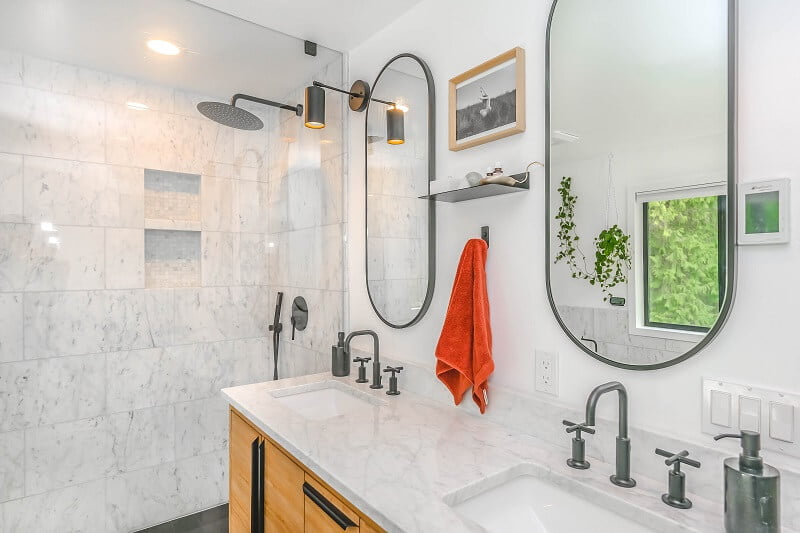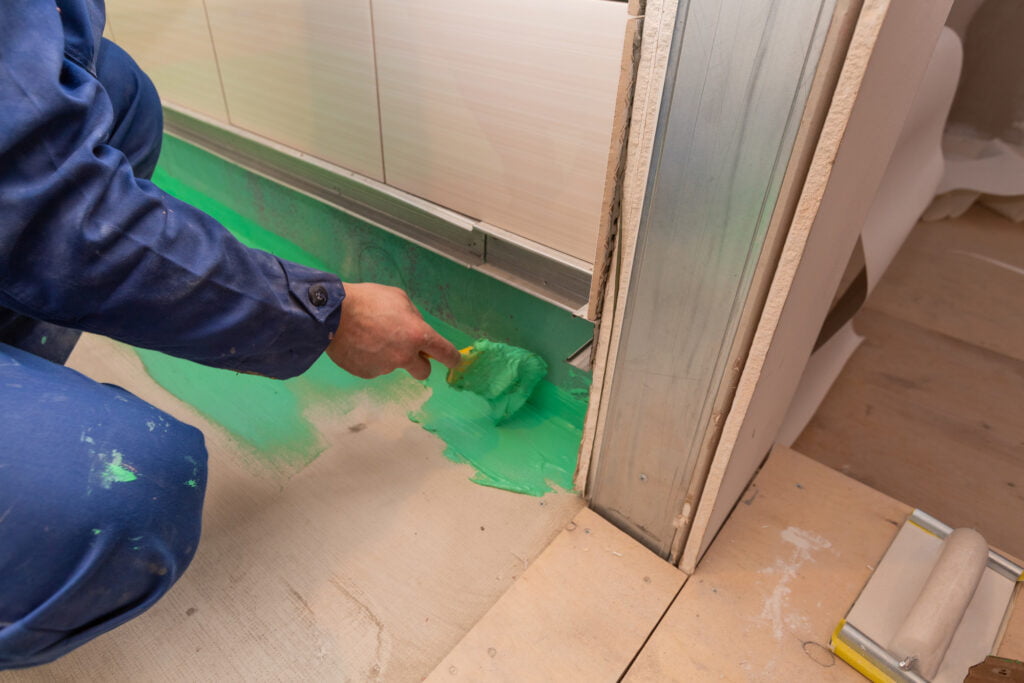Waterproofing laundry rooms can be a step sometimes skipped in new builds and home renovations when an owner is trying to save costs. But waterproofing is a crucial installation for all wet areas of the home, including rooms that are exposed to rain and rising damp, to minimise the risk of water damage to the property.
Waterproofing can also be a major defect in houses when it hasn’t been done right or if it’s been skipped altogether. An open home inspection is the perfect time to check the wet areas of the property to assess if they have been waterproofed sufficiently. This includes the bathrooms, kitchen and laundry.
Note that Action Property Inspections is a specialist service for pre-purchase property inspections in Brisbane. We do not offer waterproofing inspections as a stand-alone service.
Insights from the inspector: The importance of proper waterproofing is often ignored, but a recent job I was on highlights why it’s crucial. I was looking at the laundry, and although the homeowners were proud (bragging) about their DIY renovation work, they had obviously forgotten one critical step! Yep, waterproofing. They had a room full of modern appliances, and the design was great, but there were already signs of water damage on the baseboards and lower walls. The lesson? Don’t cut corners, particularly in wet areas like laundries.
Let’s explore what you need to know about waterproofing your laundry, how it’s done, and how you can identify if the room you’re standing in has been waterproofed correctly.
Does a laundry need waterproofing and why?
Yes, a laundry does need to be waterproofed as it is prone to water leaks just like the bathroom and kitchen.
In most households, laundry is used daily to wash clothes. It equates to 23% of the household’s water use and is the third-top wet room in the home to draw the most water. The high water use requires adequate drainage and protection for the floors and surrounding surfaces should the water not flow where it’s directed.
Laundries can also be damp rooms due to frequent water use and humidity caused by the appliances. It makes sense to waterproof a room that has a high use of water, to safeguard against overflows and leaks causing water damage to surrounding floors and walls in the home.
How should a laundry be waterproofed?
Every state in Australia has different laws on who can install waterproofing.
In Queensland, the waterproofing installer must have a valid and current waterproof licence. The homeowner should be given a certificate of compliance to guarantee that the waterproofing installed complies with Australian Standard AS 3740—Waterproofing of Domestic Wet Areas.
Using a qualified waterproof specialist is crucial for all home waterproofing applications. If the installer is not properly trained or a DIY job is conducted, this can lead to big problems with the integrity of the home and a costly renovation.
How waterproofing is done
The process of waterproofing is done in stages. It will be applied before the floors and walls are installed. A primer and a few coats of sealant are applied for the bathroom and laundry.
Waterproofing can take a day or so to completely dry before tiles can be laid. Your licensed waterproof installer will give the go ahead when the surface is ready to install tiles.
When the floors and walls are tiled, sanitary grade silicone will be applied where the walls meet the floors and around fixtures and appliances to prevent water seepage.
What happens if you don’t waterproof a laundry?
If a laundry is not waterproofed, you risk water damage to your property.
The laundry is a common place for water leaks and bursts. While the taps feeding your washing machine should have flood stop valves—meaning the water will shut off the moment a hose bursts off the outlet of the tap—there is a risk they can be faulty or not be installed at all.
Slow water leaks from pipes in the wall can also occur without you knowing.
When water finds its way behind walls and under floors it can:
- weaken timber studs and rot them away
- attract termites resulting in termite damage
- encourage mould and mildew growth which can be detrimental to health.
These problems can not only affect the structural integrity of your home, they can cause issues when trying to sell.
How can you tell if the laundry has a waterproof membrane?
There is no surefire way to tell if a laundry has a waterproof membrane unless a compliance certificate from the installer and homeowner can be supplied.
But these checks are the ones to make when you’re not sure.
- Organise a pre-purchase building and pest inspection. A building inspector can note water damage and structural integrity during the inspection.
- Look at walls and floor surfaces for mould and mildew
- Make a note of how the tiled floor feels underfoot. If water squishes through the tiles or the tiles feel like floating on the floor, this is a sure sign that no waterproofing has been installed in the laundry.
- Look for water damage underneath the floor if it’s a double storey property. Look at timber beams to check for rotting due to moisture.
Your open home checklist should include a visual inspection of the laundry floors and walls.
Waterproofing laundry rooms is important, and it pays to check that this has been carried out in any property you’re considering for purchase. To find out more and for peace of mind, contact Action Property Inspections to book your next building inspection.



